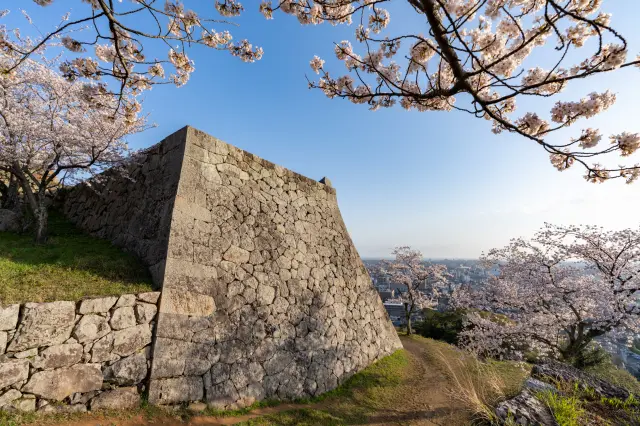 Search for Flights
Search for Flights
 Search for Hotels
Search for Hotels
 Check Exchange Rates
Check Exchange Rates
 Check the Weather
Check the Weather

Kumano, Wakayama: A World Heritage site where ancient Japanese beliefs and prayers live on
Last update
The Kii Peninsula, the largest peninsula in Japan, juts out into the Pacific Ocean from central Honshu. It is here that you will find Wakayama Prefecture, and in its southernmost area, Kumano. Called an “island on land” since ancient times due to its mountainous terrain that impedes easy access, over its history Kumano has developed its own unique spiritual beliefs and practices.
A widely known example of the area’s beliefs is the Kumano faith, whose sacred sites are the shrines of the Kumano Sanzan (Three Grand Shrines of Kumano): Kumano Hongu Taisha, Kumano Hayatama Taisha, and Kumano Nachi Taisha. Connecting these shrines is the Kumano Kodo, a pilgrimage route in the Kii Mountains. The route and sacred sites associated with it make up Sacred Sites and Pilgrimage Routes in the Kii Mountain Range, a UNESCO World Heritage site.
A journey through Kumano will deepen your understanding of the history and culture of the Kumano faith. Dive deep into this “island on land,” and discover the warmth with which it welcomes all people, regardless of religious beliefs.
Encounter Kumano's deities and Buddha in the sanctum of the Kumano faith

Shaden (shrine buildings) stand in a row with the forest behind them. In the middle is the third shaden, the Shojo-den.
We begin our journey at Kii-tanabe Station, where we meet our driver and head into the mountains. Over an hour later, we arrive at our first destination and the setting for our special cultural experience: Kumano Hongu Taisha.
This shrine is one of the three Kumano grand shrines that are the center of the Kumano faith. We pass through a grand torii gate bearing a plaque dedicated to the principal deity reading “Kumano Daigongen” and continue up a long flight of stone stairs, Japanese cedar trees towering above us. Reaching the top of the 158 steps, we are welcomed by two priests, including the 16th guji (chief priest), Ietaka Kuki.
The special cultural experience for this trip is a priest-guided tour of Kumano Hongu Taisha. We are lucky to have the rare chance to be guided by the chief priest himself.
At the shrine gate, a Shinto priest purifies us with an oonusa (a wooden wand decorated with paper streamers called shide). We then proceed to the main shrine. From there, we visit each shaden in order, paying our respects at the third, second, first, and finally, the fourth shaden. We are then privileged to receive a special tour of the inner sanctum, which is strictly closed to the public.

A tranquil prayer is made where traveling Buddhist priest Ippen Shonin (1239–1289) received a divine message from Kumano Gongen.
Guided by Kuki, we enter and bow deeply at the third shaden, Shojo-den. We sit beneath the cloister surrounding the shrine. This is a sacred place, where Ippen Shonin, the founder of the Jishu sect branch of Pure Land Buddhism, received a revelation from Kumano Gongen at a time when he was having concerns about his work teaching dharma.
The chief priest explains that Kumano Gongen instructed Ippen Shonin to continue his work by saying, "Do not be concerned by how to preach dharma. Do not choose between belief and disbelief. Do not be concerned by purity and impurity."
This was the catalyst for Ippen Shonin's enlightenment, and he went on to spread Buddhism indiscriminately throughout Japan. “This is a place of rebirth, a place of resurrection,” says Kuki.
Listening to the words of the priest, hands together in prayer, I feel as though the spirit of Kumano Gongen lingers in the air.
Savor a lunch of local bounty sprinkled with a deep affection for Kumano

Kumanoko Shokudo is located in a kominka, a traditional Japanese-style house, in the shrine town of Kumano Hongu Taisha.
After our powerful introduction to the Kumano faith, we bid farewell to Kumano Hongu Taisha, descending the long flight of stone steps. Feeling spiritually refreshed and light on our feet, we head for lunch.
After a short walk, we arrive at Kumanoko Shokudo, a restaurant that has been welcoming locals and visitors from Japan and abroad since its opening in 2018. At the entrance, we remove our shoes and step into the restaurant, where we find a spacious tatami room and a relaxing atmosphere. The owner, Masakatsu Morioka, a self-professed Kumano afficionado, welcomes us.
Mr. Morioka, who visited Kumano many times as a student, explains that he was fascinated by Kumano and moved to the area after graduation, opening a restaurant with friends. The restaurant operates under the theme of “Kumano no Megumi,” or “Blessings of Kumano.” Though the food produced in Kumano isn’t branded with the region’s name as has become common elsewhere in Japan (Kobe beef for example), Morioka is quick to say that the area’s produce is wonderful, nonetheless. “I would be happy if people could discover the appeal of Kumano through our food.”

The venison Bolognese set features locally sourced wild game.
We listen to Morioka speak of his love of Kumano while enjoying the venison Bolognese. The sauce is made with venison purchased from local hunters and is rich and flavorful without being gamey. The salad, made with pesticide-free vegetables grown in the restaurant's garden, brings out the natural flavors of the vegetables.
Explore Oyunohara, the former site of Kumano Hongu Taisha

The striking torii of Oyunohara, Japan’s largest shrine gate
After an excellent meal of local specialties, Morioka sees us off and we head to our next destination, the former site of Kumano Hongu Taisha: Oyunohara.
Fields stretch out on either side of the sando approach, while a mammoth torii towers over it. At 34 meters high and 42 meters wide, it is the largest torii in Japan and was erected in 2000 to pray for peace and stability in the world.
Kumano Hongu Taisha was once situated on a sandbank where the Kumano, Otonashi, and Iwada rivers meet. However, in 1889, a devastating flood swept away many of the shrine buildings. In 1891, the shrine was rebuilt by relocating the remaining buildings to the shrine’s present site.
Although this is the former site of the shrine, it is still part of the precincts of Kumano Hongu Taisha. Passing through the torii and continuing along the sando approach into the forest, I am struck by the sacred atmosphere that endures.

Two stone hokora (small shrines) are enshrined at the site where Kumano Hongu Taisha once stood.
The sando ends in a clearing. This is where the shrine stood until roughly 130 years ago. Many who made the journey to Kumano, including former emperors and members of the Imperial Family, traveled great distances to reach this sacred space.
With this in mind, we make our way to the two stone hokora enshrined here after the relocation, bow our heads, and join our hands in prayer.
Kumano-gawa River Boat Ride Experience

About 90 minutes while enjoying the magnificent scenery, 16km down the riverboat

Enjoy the scenery of the steep rock surface and huge rocks due to the unique geology
Leaving Oyunohara behind, you will be taken by courtesy car to a road stop to the river halfway between Kumano Hongu Taisha and Kumano Hayatama Taisha.
You will have an experience with a ride down the Kumano-gawa River in a private traditional wooden flat-bottom boat.
The Kumano-gawa River was a vital section of the Kumano Kodo pilgrimage route between Kumano Hongu Taisha and Kumano Hayatama Taisha.Traditionally, this sacred waterway was considered an object of worship.The Kumano River, part of the Kumano Kodo pilgrimage routes, is designated a UNESCO World Heritage Site.
Ride a slow-moving boat down the river to Kumano Hayatama Taisha. Spend around 90 minutes experiencing magnificent nature and listening to the calls of wild birds as well as an explanation of points of interest provided by a "storyteller". And you can also enjoy a traditional bamboo flute performance played by a guide.
Receive the blessings of the gods at Kumano Hayatama Taisha

Bask in the glory of the brilliant vermillion shrine buildings

The great boulder is called Gotobiki Rock and is the spot where the deity Hayatama-no-okami is said to have descended to earth.
Our next destination was another of the grand shrines, Kumano Hayatama Taisha, and the journey by car would follow the Kumano River for about 40 minutes. Arriving near the mouth of the Kumano River we are greeted by a priest who ushers us along the sando approach to the shrine.
Along the way we pass by a great nagi (Asian bayberry) tree which positively radiated energy, and it was no surprise to discover that it is considered a tree sacred to the shrine. Passing through a vermillion-lacquered torii gate one was instantly struck by the difference between this grand shrine and the one we had just visited. Here the bright vermillion of the shrine shone in the sun, ephemeral against the white gravel underfoot. Amidst the verdant forest around us, it was like entering another world.
We were then invited to visit the main shrine building. This is where Kumano Hayatama-no-okami and Kumano Fusumi-no-okami are enshrined as deities. These deities are Japan’s first married couple also called Izanagi-no-mikoto and Izanami-no-mikoto, who are similar to Adam and Eve in Judeo-Christian theology. Through purification rituals, shared prayers, and an offering to the shrine one is said to receive the deities’ blessings which are associated with marital success.
The priest explains, “the offering you make to the shrine is a branch of the nagi tree, the same tree we passed on the way here. That is a symbol of the Kumano Gongen deities, and it is associated with safe travel on this pilgrimage, and on the seas and road in general, because “nagi” means “calm” in Japanese. For centuries pilgrims travelled with a nagi branch close to their heart to protect them on their travels. Pilgrims would come to this shrine and receive a nagi branch and our traditional talisman called the kumano goou-houin, and this would give them strength to complete the pilgrimage.”
We then receive an amulet resembling a nagi to take with us, as well as the kumano goou-houin and set off for our next destination, Kamikura Shrine on Mt. Kamikura, which is actually the origin of Kumano Hayatama Taisha.
538 steps later we are surveying stunning views, as well as a great boulder seemingly perched on the side of the mountain. This great rock known as Gotobiki Rock, said to have originally descended from the three gods of Kumano (Kumano Hayatama Omikami of Kumano Hayatama Taisha Shrine, Kumano Yusumi Omikami of Kumano Nachi Taisha Shrine, and Ketsumikonogami of Kumano Hongu Taisha Shrine). The grand shrine was then built in reverence to welcome the spirit of the deity.
After visits to two of the Three Grand Shrines of Kumano, I started to look forward in wonder to the final one. At the foot of Mt. Kamikura, we bow our heads once more and depart for our next destination.
Unwind on a one-inn island floating in the azure sea

Kishu Chomon-no-yu, an open-air bath with a spectacular view of the sea
Our driver then takes us south along the Kumano River to Kii-Katsuura. We are now on our way to our accommodation for the night, Kumano-Bettei Nakanoshima.
Kumano-Bettei Nakanoshima is a private resort located off the coast of Katsuura Port on the island of Nakanoshima. We bid goodbye to our driver at the port and take a private boat from the pier. The approximately 5-minute boat ride from the port to the island boasts magnificent views of the Pacific Ocean and the islands that rise from its depths.
After enjoying a welcome drink while checking in, we are led to Nagi-no-sho, a new building where all rooms come with an open-air bath. The rooms are decorated in a modern Japanese style based on a theme that celebrates Kumano's mountains and sea. Wooden furniture and intricate kumiko woodwork create a warm, calming atmosphere.
We decide to save our room-adjacent baths for later and head to the inn's impressive Kishu Chomon-no-yu, a large communal open-air bath with a breathtaking view of the ocean. The sight of the sea stretching out before us, and the soothing properties of the hot spring water leave us feeling rejuvenated.

A dinner featuring the bounty of Kumano(The food shown in this photograph is only an example. Actual meals may vary depending on season and your chosen stay plan.)
Dinner spoils us for choice, with delicacies from the seas of Nanki Kumano and the diverse bounty from the land combining into a real feast. We dine on local specialties such as Katsuura’s famous tuna, abalone, and Kumano wagyu beef before heading to the lounge for a post-dinner drink. We call it a night before it gets too late, as tomorrow will begin with an early trip to the morning tuna auction.
Observe an auction at Japan's top port for tuna

Fresh tuna, the pride of Katsuura, covering the entire floor of the auction hall makes for quite a sight.
After a restful sleep at our private island resort, we’re up early to head to Katsuura Port, where we’ll watch the tuna auction.
Katsuura boasts the largest haul of fresh tuna by longline fishing in Japan. Tuna from the Kumano Sea, one of the best fishing grounds in Japan, is landed at the fishing port every day. Today is no different: there’s been a bumper catch, and tuna of all sizes can be seen from the viewing area on the upper floor of the auction house.

The energy from the auction floor easily reaches the upper viewing area.
Before the auction begins, our guide explains the history of the fishing port, the traditions of longline fishing, and the ins and outs of Katsuura's tuna. In recent years, changes in the marine environment due to climate change, overfishing, and other factors have led to a decline in catches. The tuna fishery is on the verge of a crisis. Katsuura has adopted the longline fishing method, which catches only full-grown fish, in an effort to prevent overfishing and to preserve the culture of tuna fishing for future generations.
In the auction room, which has suddenly come to life, the tuna auction begins. Middlemen bid in loud voices for the tuna they’ve selected, each passionately pursuing his choice of fish. It’s more spirited than I expected.
Learn the history and culture of Nachi's worship at a World Heritage site

Boats like this were used by the faithful to "cross the sea" to Mt. Fudaraku (Kannon’s Southern Pure Land Paradise) in a form of ritual martyrdom.
After witnessing battles on the auction room floor, we return by private boat to our inn for breakfast, after which we head to the observatory to admire the view of the Kumano Sea before checking out.
At Katsuura Port, we're met by our driver, who takes us to Fudarakusanji Temple, a World Heritage site. This ancient temple is said to have been founded by Ragyo Shonin, who arrived in Japan from India in the 4th century. It is a foundational center of worship for the Fudaraku Shinko faith.
"Fudaraku" is a transliteration of the Sanskrit "Potalaka," and refers to Kannon’s Southern Pure Land Paradise. In addition to the Kumano Sanzan pilgrimages, Kumano was also home to a faith that saw followers seek to reach Mt. Fudaraku by way of fudaraku-tokai, or the practice of crossing the sea to reach paradise. The faithful, carrying minimal provisions, would board small boats called fudarakusen and have the doors fastened shut before sailing out to sea. This temple was the starting point of their one-way journey.

A stone monument inscribed with the names of 25 people who set out on the journey to Mt. Fudaraku
Standing by the reconstructed boat, the chief priest and temple guardian provide us with an in-depth explanation of the Fudaraku Shinko faith. We are also shown a stone monument inscribed with the names of 25 people who set sail for Mt. Fudaraku.
After learning about the history and beliefs surrounding the temple, we visit the hondo (main hall). As we enter, we’re met by a female guide dressed in the white garb of a Kumano Bikuni. The Kumano Bikuni were nuns who traveled Japan from the Sengoku period (1467–1568) to the Edo period (1603–1867) carrying mandala paintings with the aim of collecting donations for the Kumano Sanzan and attracting visitors to the temple. This tour provides an opportunity to experience the Nachi Pilgrimage Mandala painting with explanations provided by your Bikuni guide.

Thanks to excellent explanations provided by our guide, we are able to walk in the shoes of pilgrims.
Our guide is a skilled storyteller, and as she recites the histories of those who made pilgrimages to the sacred sites depicted on the mandala, we find ourselves drawn into a world long gone and feeling as though we, too, are on a pilgrimage. The explanations also serve as an excellent introduction to the sites we are heading to on the next leg of our journey.
To Daimonzaka: a walk along an ancient stone-paved path beneath a dense forest of Japanese cedar

Meoto-sugi (wedded Japanese cedar), a pair of 800-year-old Japanese cedar trees
Armed with newfound knowledge of Nachi, we make our way to the area’s sacred sites to experience them for ourselves.
We travel by car along the Nachi River from Fudarakuji to the Daimonzaka parking lot. After a short walk, we reach the entrance to Daimonzaka, which leads to Kumano Nachi Taisha Grand Shrine, the final stop on the Kumano Sanzan pilgrimage. Daimonzaka, a stone-paved slope that stretches approximately 600 meters, is part of the Kumano Kodo Nakahechi route. It is considered one of the most beautiful sections of the Kumano Kodo.

The beauty of the ancient road is magnified by sunlight filtering through the trees.
After walking the paved road from the entrance of Daimonzaka and passing through a small village, we reach a torii depicted in the Nachi Pilgrimage Mandala we’ve just seen. We bow, pass through the gate, and cross the Furigase Bridge, which is said to separate the sacred and secular realms of Nachi. Before us rise two enormous Japanese cedar trees. These 800-year-old trees are called meoto-sugi—"wedded Japanese cedar.” The stone-paved slope beyond is Daimonzaka.
The moss-covered stone-paved path leads through a dense grove of Japanese cedar. We walk up the path, step by step, thinking of the pilgrims who walked this trail before us. Finally, we arrive in the shrine town of Nachi Kumano Taisha.
Visit the deity of Nachi at the origin of the Kumano faith

Worship inside the haiden (hall of worship) and experience Shinto rituals, including prayers, purification, and kagura (Shinto performing arts).
After climbing Daimonzaka, we stop to catch our breath and have a bite to eat in Nachi Taisha's shrine town. Soba (buckwheat noodles) and mehari-zushi (rice balls wrapped in pickled takana leaves) are simple but refreshing local specialties. We finish our meal off with Kumano-mode mochi (glutinous rice cakes), another Kumano specialty.

After worshipping, explore the honden (inner sanctuary) and grounds with a Shinto priest on a special guided tour.
We then head for Kumano Nachi Taisha, located atop Mt. Nachi. We climb a long set of stone stairs to reach the shrine grounds and vermillion-lacquered buildings on the mountaintop. Here, we will take part in a formal shrine visit.
After registration, we enter the haiden wearing simplified omigoromo Shinto robes decorated with the words "Nachi-san Kumano Gongen." We sit and wait for the ritual to begin.
Soon, the sound of a taiko drum announces the start of the ritual. This is followed by purification by the priest, kagura (Shinto music and dance) performed by a miko shrine maiden, and the offering of sacred sakaki branches. The drumming of a taiko again echoes through the hall as the ritual comes to a close.

A priest will also explain the relationship with the neighboring Seigantoji Temple.
Afterwards, a Shinto priest guides us on a special tour of the shrine grounds. We bow our heads and offer our respects to the deity of Nachi, then listen to a talk on the history of Kumano Nachi Taisha. We learn that this shrine combines a number of faiths: nature worship, Shinto, Buddhism, and Shugendo (mountain asceticism). We also learn about the syncretic relationship between Kumano Nachi Taisha and neighboring Seigantoji Temple, thereby deepening our understanding of the Kumano faith.
Admire the sacred waterfall, worshipped as a deity since ancient times

The sacred Nachi Waterfall has been admired since antiquity and up-close you can see why for yourself.
Nachi Waterfall cascades out of a primeval forest, its waters a confluence of a number of smaller streams converging in the depths of Mt. Nachi. The waterfall has a vertical drop of 133 meters, a width of 13 meters, and a plunge pool more than 10 meters deep. One of Japan's Three Famous Waterfalls, it boasts a flow rate of one ton of water per second. It has been considered sacred since ancient times. According to tradition, Emperor Jimmu, the legendary founding Emperor of Japan who is said to have ruled from 660 to 585 BCE, saw this waterfall when landing at Nachi Beach and enshrined it as a deity.

The falls can be worshipped at close proximity from a platform at the rear of the shrine grounds.
Leaving the precincts of Kumano Nachi Taisha on the mountaintop, we descend partway down the mountain to Hiro Jinja, an auxiliary shrine. After bowing and passing through the torii, we walk down the stone steps of the sando and are greeted by an immense waterfall and its accompanying spray. We bow at the place of worship and pay our respects to the sacred waterfall. We are so mesmerized by the sight; we almost forget to snap a photo.
Further into the shrine grounds, we come to a viewing platform. This is the closest point from which to see the falls head-on, and from here, it is easy to understand why people have regarded the waterfall as a sacred object of worship since ancient times.
Find a warm welcome at the summit of Mt. Myoho

The hondo enshrining the principal deity, Amida Nyorai (Buddha of Infinite Light)
We leave Nachi Falls and head into the mountains towards Mt. Myoho with our driver. After 20 minutes, we arrive at Kumano Myohozan Amidaji Temple, located on the summit of Mt. Myoho at an elevation of 749 meters. This ancient Buddhist temple of the Shingon sect has origins that stretch back approximately 1,300 years to the Nara period (710–794), when a high priest from Tang Dynasty China trained here. Later, in the Heian period (794-1185), Kukai (774–835; known posthumously as Kobo Daishi) built a temple here to worship Amida Nyorai.
What strikes me first upon leaving the car is the panorama of the Kumano Sea. We admire the view before climbing the stone steps of the sando and passing through the gate. We are blessed with good timing: the priest that greets us is the temple’s chief priest, Hiroyuki Tani.

In spring, this garden is bright with flowers. Beyond the trees are magnificent views of the Kumano Sea.
Mr. Tani tells us that the temple has been worshipped as a gateway to Yomi-no-kuni (the afterlife), and that it has been considered to be the temple governing the journey to the next life. Since the Heian period, when belief in the Jodo Shinko (Pure Land) faith became popular, many who longed to visit Saiho Kodo—the Western Pure Land where Amida Nyorai resides—made the trek to visit this temple. He explains that the temple's practice of welcoming people in distress, regardless of faith, purity, or status, has not changed over the years.
The chief priest's words are reminiscent of Kumano Gongen's benevolence, and I feel tranquility, comfort, and warmth as I join my hands in prayer before the statue of Amida Nyorai and then wander the spacious grounds.
Though we wish we could stay longer, we thank the priest and descend the mountain. The journey home has begun, but we are treated to a final show of Kumano’s beauty from the window of our car: the terraced rice paddies of the village of Irokawa. Next thing we know, we reach Kii-Katsuura Station, our final destination.
A one-night, two-day trip to Kumano, the "land of rebirth," to experience ancient Japanese beliefs and culture of prayer. From its gods and Buddhas to its land, people and food, everything about Kumano makes it seem like a place full of miracles that inspire you to keep on living.
By personally visiting Wakayama and experiencing and telling about the wonderful culture and tradition we encounter there, we hope we can be some help in ensuring that charming tradition and culture of Wakayama is passed down to the next generation.
Check also...
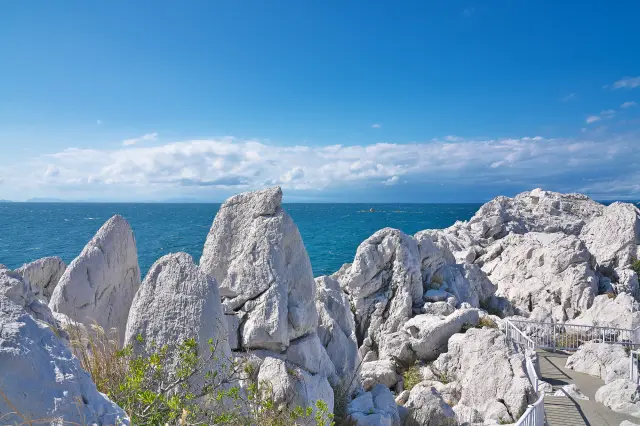
5 Local Experiences Not Found in Guidebooks: Wakayama Edition
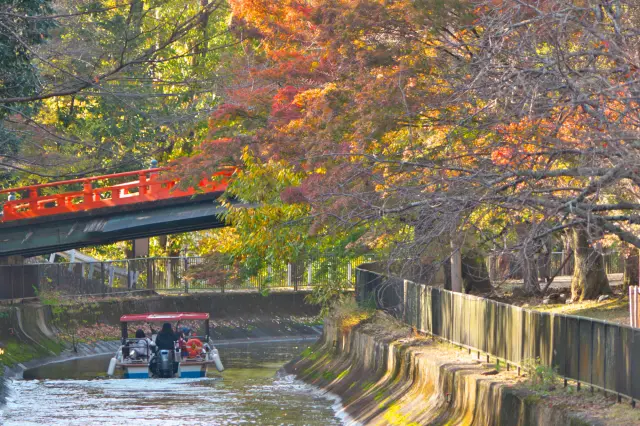
3 Spots with Timeless Landscapes for Appreciating Kansai’s Rich History
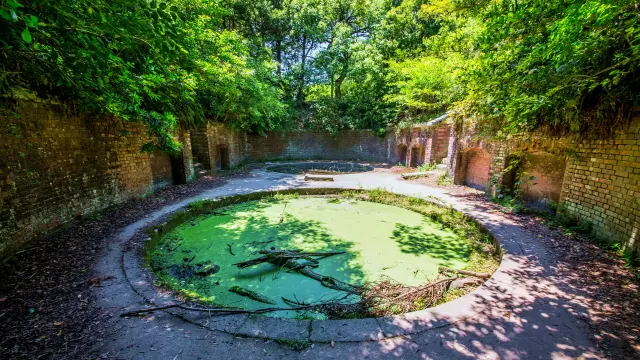
Perfect for a Day Trip from Osaka! Photogenic Locations on the Uninhabited Islands of Tomogashima

The Basics of Shrine Visiting! Must-Know Information and Some Recommended Shrines in Japan
![Take a leisurely stroll in the retro and fashionable space [Kuroe, the town of Kishu lacquerware]](/kansaiguide/data/article/21000/20278/20250618_133123_770e1e88_w640.webp)
Take a leisurely stroll in the retro and fashionable space [Kuroe, the town of Kishu lacquerware]
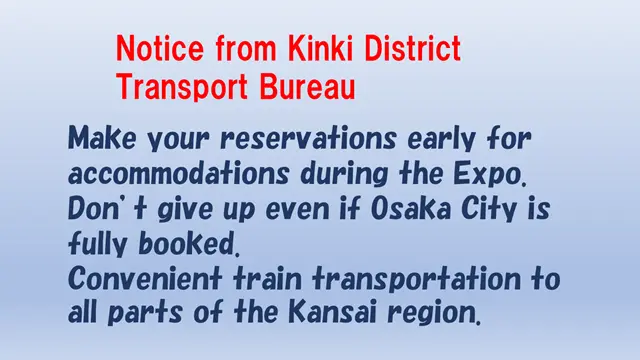
Consider your accommodation in the Kansai area!
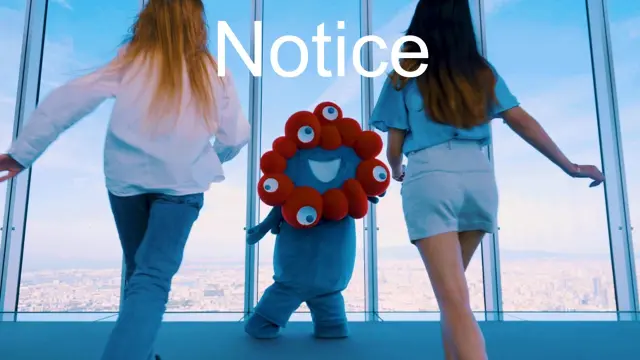
Restrictions on Large Baggage
